Part I: The Society to Befriend Domestic Animals
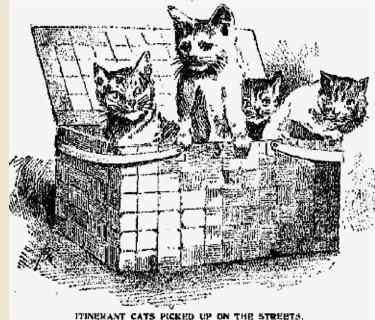
Over 100 stray cats and boarder cats lived at the Washington Heights cat home, including Jack, Daisy, and Minnie from Brooklyn; Mrs. Vele’s Spotter and Monsie from Rockland County; Minnie and Turtle Shell from 28th Street; and Cry Baby, Sad Face, and Ash Barrel Kate.
Like all crazy cat ladies or cat hoarders, Mrs. Sarah J. Edwards and Mrs. Grace Georgia Devide had good intentions when they opened a refuge for homeless cats in 1890. But something went terribly wrong, and a mission to provide shelter and food for friendless and maltreated cats turned into the
Midnight Band of Mercy — a midnight-hour killing spree.
In the summer of 1890, five animal lovers declared that they would devote the rest of their lives to improving the lives of city cats. They formed the Society to Befriend Domestic Animals (SBDA), and set out to find the perfect house to rent in a remote part of the city so as to not disturb the neighbors.
The society comprised Mrs. Grace Georgia Devide, Mrs. Sarah Jennie Edwards, Mrs. Emma Charlton, Mrs. Mary Hans, and Mrs. Mary Wilson.
The mission of SBDA was “to provide shelter and food for the homeless and maltreated animals; to secure painless death for animals rendered decrepit by accident or incurable ailment; to secure through educative agencies the repression of all forms of cruelty to animals.” Unfortunately, some of the founding members appear to have gone mad, forming a Midnight Band of Mercy that went against their original mission.
The Home for Friendless Pets

Sarah Edwards lived with her cook, chambermaid, and about 20 cats in a five-story loft-building flat at 125 West 28th Street (shown here in 1928). This address was the former site of the Smith & Crane church furniture factory, which burned down in 1880. Today it is the site of a Cambria Suites hotel.
On August 30, 1890, a reporter from The New York World visited Sarah Edward’s apartment at 125 West 28th Street to discuss plans for the “cat asylum” with the women. Sarah was a widow (and reportedly a former working girl in the Tenderloin District), but she had plenty of feline company: On that day, her parlor was filled with about 20 cats – some were on the piano, some on the sofa, and one cat was on each of the women’s laps.
Grace Devide, a southern belle from Virginia and the animated leader of the movement, lived with her husband in a four-story brownstone at 230 West 21st Street. She told the reporter that she had begun feeding stray cats in her neighborhood around 1875.
She liked to feed the cats at midnight, because this was the time “when wicked boys are asleep and cruel men are too drunk to use their canes.” During the day, she’d tell the little boys who tortured the cats that it was a sin to kill them. Grace’s favorite time to feed the cats is what led to the Midnight Band of Mercy.
The Home for Friendless Cats
The women’s plans to establish a cat asylum generated a lot of attention in the New York newspapers. Some readers sent monetary donations in response to the articles. Many people brought lame and mangy animals to Sarah’s home, which she had a hard time turning away.
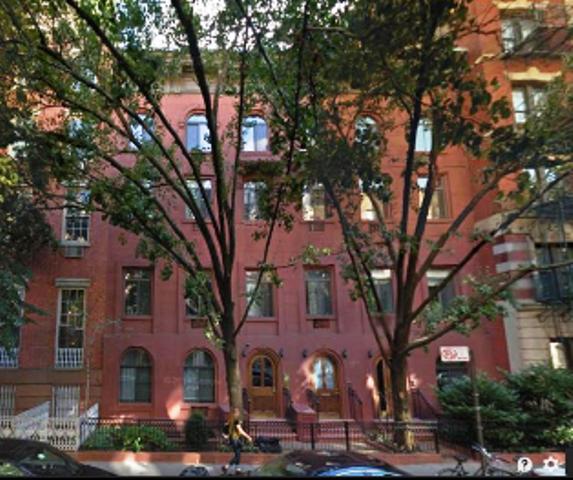
Grace Devide gave up this four-story brownstone at 230 West 21st Street to dedicate her life to stray cats and other animals.
One day in October, a line of men and boys carrying cats and dogs stretched halfway down 28th Street. After stepping on numerous cat tails, Sarah’s cook reportedly packed her trunk and moved out. The chambermaid and a waitress also threatened to quit.
The ladies, did, however, get an offer from Mr. Thomas W. Organ to rent a dilapidated frame shanty on the old Barney and Rosannah Bowers farm for $50 a month.
The house was ideally situated on a large tract overlooking the Harlem River at the terminus of the new Tenth Avenue (Amsterdam Avenue) cable road near 185th Street in Washington Heights.
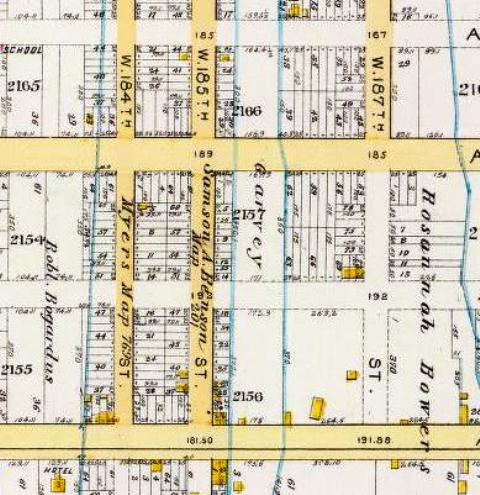
The ladies of the SBDA rented an old farmhouse and two stables, possibly the three yellow structures on Amsterdam Avenue between 185th Street and 187th Street. Click here for a more detailed look at Washington Heights in 1891.
Grace Devide described the home to the reporter:
“We’ve got the finest place in the world for the poor cats… It’s got a couple of barns upon it, which we’ll fix up for the cats to sleep in, you know. I’ll live in the house, and Mrs. Edwards’ niece, who loves cats just as much as I do, will be there with me, and help care for the poor maltreated things.
Oh, we’re going to have a regular little heaven for the cats up there, you know. We’ll have the place all fenced in with wire, so they can’t get out, and they will have the run of the house during the day.”
When asked if she was willing to give up her lovely home and husband to move into the cat asylum, Mrs. Devide replied, “My husband refuses to follow me there. He is a professor of music, and he thinks this is craziness on my part. But never mind. I will give my life to help the friendless outcasts of the city, against whom every other human hand is turned.”
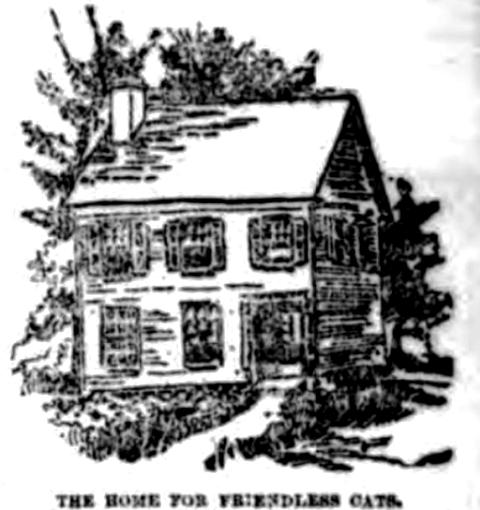
As one New York paper reported, the old farmhouse was “on the verge of dissolution” and its surroundings were “of the most dismal description.” A signboard outside the door was painted in white letters: “We speak for those who cannot speak for themselves. Home for friendless domestic animals. Compassion.” There were also holes cut in the door so the animals could come and go.
The Barney Bowers Tract
Two hundred years before Grace and Sarah established their cat home at 185th Street on Washington Heights, the range of hills on ridge overlooking the Muscoota (Harlem River) was a hunting place of the Weckquaesgeek tribe, whose largest village was Nipinisicken on the Spuyten Duyvil hill.
In 1673, the first road was cut through this woodland then known as Jochem Pieter’s Hill or the Long Hill, probably following an old hunting trail along the present line of Broadway (the locals called it Breakneck Hill).
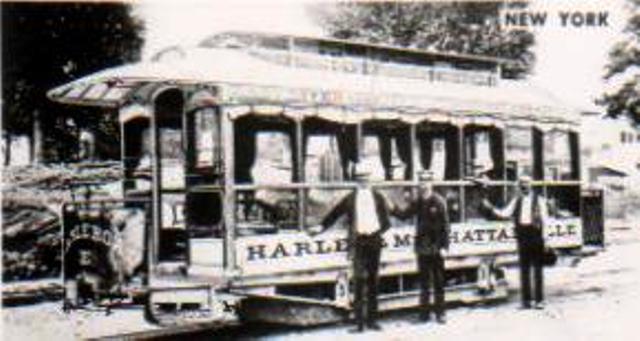
The Tenth Avenue cable road from 125th to 187th opened on December 1, 1886. Passengers paid 25 cents to ride on the open parlor cars on this route, like the “E” car shown here. In 1890, Superintendent Edward Lyon made plans to allow passengers to take unwanted cats and dogs on the cable cars on designated days of the week, so that they could bring them to the cat home.
Sometime around the late 1690s, a magistrate by the name of Joost Van Oblinus acquired a large tract of cleared land called the Indian Field or Great Maize Land, which extended along the new road from about 165th to 181st Street. In 1769, his grandson Johannes sold about 100 acres of this land to Blazius Moore.

The Barney Bowers’ tract also abutted the residence of James Gordon Bennett, proprietor of the New York Herald and The Evening Telegram, who owned land north of 181st Street from Broadway to the Hudson River. This 1859 wood engraving shows Bennett’s estate on the Hudson River, which was later donated to the city for the development of Bennett Park.
Blazius Moore was a well-known tobacco merchant who had a business at Broadway and John Street. Blazius Moore also had two sisters. His sister Catherine married Pierre Lorillard of the Lorillard Tobacco Company (their son founded the Tuxedo Club at Tuxedo Park, New York).
His sister Rosannah married John Bernard Bauer (aka Barney Bowers), a preacher from Frankfort, Germany. Barney Bowers and his new bride purchased farm land from the Bussing family, which was adjacent to the Moore property.
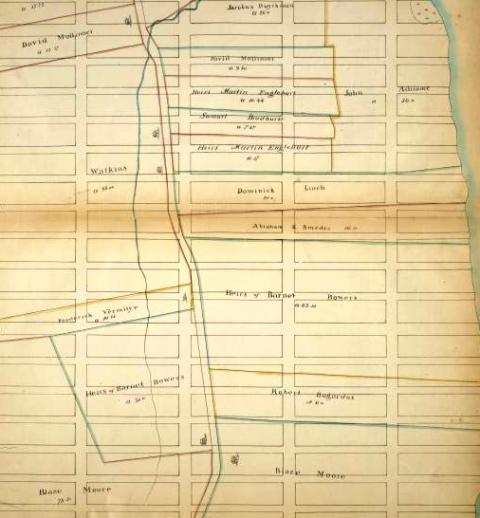
In 1874, David Dudley Field paid $80,000 for 18 acres of land from the Barney Bowers tract, which was once part of a much larger farm belonging to Barney and Rosannah Bowers. Click here for a more detailed look of the old farms in Washington Heights in 1868. New York Public Library
Sometime around 1780, Barney died of injuries sustained during the Revolutionary War while lifting guns at Fort Washington. Following Rosannah’s death, the property passed on to the Lorillard family.
The next mention of the farm was in an in the New York Post in 1869 announcing the sale of 200 city lots on the old Bowers Farm. In 1874, David Dudley Field, a prominent New York attorney, paid $80,000 for 18 acres of the Bowers tract bounded by Eleventh Avenue, the Harlem River, 185th and 188th Street.
It is quite probably that it was on this land that the Midnight Band of Mercy operated their home for friendless cats in the early 1890s.
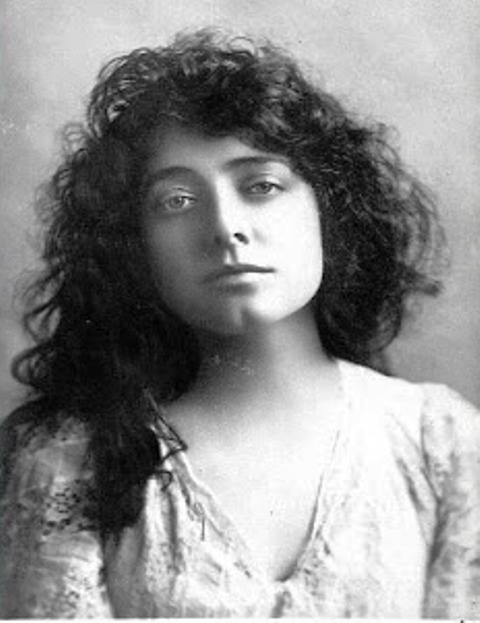
Julia Marlowe, a leading Broadway actress of Shakespeare and former resident of the River Mansion at 337 Riverside Drive, paid 50 cents a week for her cat Princeton to stay at the cat home in Washington Heights.
Open for Business
The home for wayward animals in Washington Heights opened for business in October 1890 with 14 cats and seven dogs. Grace backed out of her plans to live at the house, so Sarah moved in and hired a paralyzed woman for $5 a month to watch after the cats at night when she went home to her apartment downtown.
By April 1891, there were 125 cats and 10 dogs at the house, including a few boarders whose transient owners paid for their stay while they were out of town. The ladies encouraged people to adopt the stray cats, as long as they promised to treat them kindly and return them to the home if they got tired of caring for their pet.

Each day, the cats and dogs would eat up to 25 pounds of meat and 10 quarts of milk. Luckily, a few hotels and restaurants, such as Koch’s New Mount St. Vincent Hotel at 178th Street (shown here), were willing to help out by providing a daily allowance of food. Museum of the City of New York
The Midnight Band of Mercy
In addition to caring for all the cats in the home, the SBDA also organized a band of about 25 women to feed the stray cats at night. This feeding crew would eventually come to be known as the Midnight Band of Mercy.
As the New York Herald reported on May 7, 1893:
“Several women compose the band, and three times a week they issue forth at the unearthly hour of two in the morning and prowl around until four looking for stray cats, in highways and byways, in alleyways and in cellars, on fences and under stoops and other haunts affected by the New York cat about town.
They claim to feed two thousand cats a week in this manner, and they carry the food in tin pails and baskets. Meat the first night, catnip the second and fish on Friday nights.”
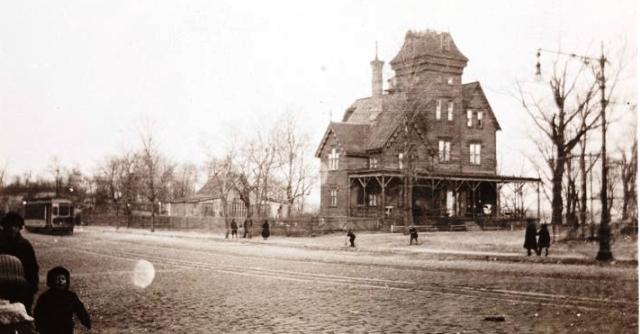
This dilapidated home on Tenth Avenue (Amsterdam Avenue) looks like the perfect house for crazy cat ladies, but it was actually closer to 176th Street. New York Public Library
In 1893, the women had to abandon their home for cats in Washington Heights (apparently, too many young boys had found out about the home and were tossing poisoned meat to the cats). Determined to save all city cats from starvation and horrible lives, the ladies were now forced to take other measures to control the feline population.
As more and more dead cats began appearing on the streets, the crazy plot of the Midnight Band of Mercy began to thicken.
In Part II of this Crazy Cat Lady tale of Old New York, I’ll tell you what happened to Sarah and Grace when the ladies of the Midnight Band of Mercy were finally caught in the cat-killing act.




[…] 1890: The Crazy Cat Ladies of Washington Heights and Their Murderous Midnight Band of Mercy […]
Interesting post. I was searching for references to James Gordon Bennett’s estate and came across your article.
I was wondering if you might provide what sources of information you have that addresses the disposition of Mr. Bennett’s estate upon his death. You state that it “was later donated to the city for the development of Fort Tryon Park and the Cloisters.”
My research has that a portion of his estate that was bought at auction was eventually donated to the city and is now Bennett Park.
The land was donated as the result of a concerted effort by several historical organizations that were trying to save it from development as it was the site of Fort Washington.
The land that eventually became Fort Tryon Park is further north and was never owned by Mr. Bennett.
Fort Tryon Park is comprised of 65 acres which were purchased by John D. Rockefeller from C.K.G. Billings know as Tryon Hall, as well as the Hayes and Schaffer estates.
The Cloisters also constructed by Mr. Rockefeller is situated in approximately the center of Fort Tryon Park.
I hope this information is found to be helpful.
By the way,do you have a hi res image of the Bennett estate you possibly share?
Thank you.